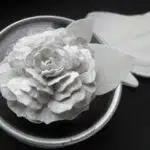Maintaining the walls of a house can be a daunting task, especially when it comes to paint. Over time, the walls may develop scratches, scuffs, or other imperfections that require touch-ups. While repainting the entire wall is an option, it can be costly and time-consuming. Fortunately, there are techniques that can help you touch up paint without having to repaint the whole wall.
As a professional painter or home improvement expert, you understand how important it is to keep your clients’ homes looking their best. Touching up paint is one way to ensure that their walls remain fresh and vibrant for years to come. In this article, we will explore various methods for touching up paint without repainting the entire wall. From choosing the right tools and materials to applying the right technique, we will provide you with all the information you need to become an expert at touching up paint.
Assessing The Damage
Assessing the Damage: Causes, Prevention
As a professional painter or home improvement expert, assessing the damage is an essential first step in any paint touch-up project. The most common causes of paint damage include water leaks, scratches, and scuff marks. Prevention is key to avoiding these damages; ensuring that your walls are dry and free from moisture can help prevent water damage, while placing furniture away from walls can help avoid scratches or scuffs.
When assessing the damage, it’s important to determine whether repair or replacement is necessary. Small scratches or scuff marks can often be easily repaired with touch-up paint. However, if there are larger areas of damaged paint or water stains that have caused discoloration, replacement may be necessary for a seamless finish.
It’s important to note that even with proper prevention measures in place, some wear and tear on walls is inevitable over time. Regularly assessing the condition of your walls and addressing any damages promptly can help maintain their appearance and prolong their lifespan.
Transition: Now that you have assessed the extent of the damage on your wall, it’s time to choose the right paint for your touch-up project.
Choosing The Right Paint
After assessing the damage, it’s time to touch up the paint without repainting the whole wall. The first thing to do is match the color of the existing paint. This can be done by bringing a sample of the paint to your local hardware store or painting supplier. They will be able to help you find a matching color, which is crucial for achieving an even finish.
Once you have matched the color, it’s important to choose the right paint type for touch-up work. You may find that your original paint has a different sheen than what is available in touch-up paints. In this case, you will need to experiment with different finishes until you achieve a close match. Additionally, some types of paint are better suited for touch-ups than others. For example, latex paints are easier to blend and clean up than oil-based paints.
When comparing paint types, consider factors such as drying time and durability. Some paints may dry quickly but not hold up well over time, while others may take longer to dry but provide a more durable finish. Ultimately, choosing the right paint type will depend on your specific needs and preferences. With careful consideration and attention to detail, however, you can achieve a flawless touch-up that blends seamlessly with your existing paint job.
Now that you have chosen the right color and type of paint for your touch-up job, it’s time to examine the sheen of your existing painted surface before proceeding further. While matching colors is essential for achieving an even finish, matching the sheen is equally important for achieving a seamless appearance overall. In the next section, we’ll discuss how to examine sheen and ensure that your touch-up work blends seamlessly with your existing painted surface.
Examining The Sheen
As a professional painter or home improvement expert, it is crucial to examine the sheen of the wall before attempting to touch up paint. The sheen refers to the level of glossiness or shininess in the paint finish. Matching finishes is vital to achieve color consistency and avoid noticeable patches on the wall.
If the existing paint has a high-gloss finish, it is best to use a glossy touch-up paint to blend seamlessly with the rest of the wall. Conversely, if the existing paint has a matte finish, using a glossy touch-up paint will result in an obvious patch and ruin color consistency. In this case, a matte touch-up paint should instead be used.
It is essential to ensure that the new paint matches both in color and sheen. Otherwise, it may be necessary to repaint the whole wall for better results. By examining and matching finishes, one can avoid costly mistakes and achieve excellent results when touching up small areas of painted walls. Next, let’s move on to gathering the necessary tools for this task.
Gathering The Necessary Tools
A paintbrush is necessary for any paint job and should be chosen based on the type of paint being used and the desired finish. A roller is great for larger surfaces, and can be used with a range of paints. Sandpaper is important for preparing the wall and creating a smooth finish. Primer should be applied before painting to ensure proper adhesion of the paint to the wall.
Paintbrush
As a professional painter or home improvement expert, you know that one of the essential tools for touching up paint on walls is a paintbrush. But before you start using your old brush, ensure it’s clean and free from any dried paint. Using a dirty brush can result in an uneven finish, which will look unprofessional. Therefore, cleaning the brush thoroughly should be your top priority.
When choosing the right size of the brush, consider the size of the area you want to touch up. If it’s a small area such as a nail hole or scratch, use a smaller brush to avoid excess paint spreading on other parts of the wall. For larger areas like scuffs or chips, use a larger brush for even coverage. Additionally, make sure to select a high-quality brush with soft bristles that can hold more paint and create smoother strokes.
To prevent ruining your freshly painted wall while trying to touch up small imperfections, mastering how to use a paintbrush is crucial. Dip the cleaned brush into the leftover paint and remove excess by tapping it against the container’s edge. Avoid dipping too much as this can lead to drips and messes on your wall. Apply gentle pressure while making light strokes over the damaged area until you achieve an even finish that blends in with the surrounding surface.
Remember that using an appropriate size and quality of paintbrush is key when touching up walls without repainting them entirely. By following these cleaning tips and selecting the right tool for each job, you’ll be able to handle all kinds of touch-up tasks efficiently and professionally.
Roller
Now that we have discussed the importance of using a clean and appropriate size of paintbrush, let’s move on to another essential tool for touch-up projects – the roller. While brushes are excellent for small areas, rollers are ideal for larger sections such as walls or ceilings. Using a roller can save you time and effort compared to using a brush.
When selecting a roller, consider the nap or thickness of the roller cover. A thicker nap is suitable for textured surfaces while a thinner nap works well on smoother surfaces. Additionally, ensure that the roller frame fits comfortably in your hand for ease of use. When using a roller, it’s crucial to apply even pressure and use proper techniques such as overlapping strokes to prevent streaks or uneven coverage.
When matching colors and blending fresh paint with old paint on walls, rollers can be useful in achieving an even finish. Start by applying the new paint over the damaged area using your preferred technique with the roller. Afterward, lightly roll over the surrounding surface to blend in the new color with the old one. Remember to work quickly before the paint dries out and use only light pressure to avoid creating noticeable marks.
In summary, rollers are crucial tools when it comes to touch-up painting projects involving larger areas such as walls or ceilings. By selecting an appropriate nap thickness and following proper techniques like overlapping strokes and light pressure when blending colors, you’ll be able to achieve an even finish that blends seamlessly with your existing wall color.
Mixing The Paint
To touch up paint without repainting the whole wall, it is important to mix the paint correctly. Proper mixing ensures consistency in color and texture, making it easier to blend in with the surrounding area. When mixing the paint, make sure to stir it thoroughly using a clean stick or paddle. Avoid shaking the can as this can introduce air bubbles and affect the consistency of the paint.
The key to achieving a seamless touch-up is matching the color of the existing paint. This can be done by taking a sample of the existing paint to a home improvement store for color matching. It is important to note that colors may appear different under different lighting conditions, so it’s best to compare samples in natural light. Once you have obtained a matching color, add small amounts of paint at a time until you achieve the desired shade.
Paint consistency is also an important factor when touching up paint. The consistency should match that of the existing paint on the wall; if it’s too thick, it will not blend well and will stand out as a patch. If it’s too thin, it may drip or run down the wall. To achieve the right consistency, add small amounts of water or thinner to thin out thick paint or add small amounts of additional paint to thicken thin paint until you reach your desired consistency.
Matching color and achieving consistent texture are crucial when touching up painted walls. In order to prepare for this step, make sure that you have properly cleaned and primed any areas that require touchup before starting with mixing your paints. A smooth surface will allow for better blending and ensure that your touchup is seamless with no unsightly bumps or ridges on your walls after painting over them again!
Preparing The Surface
After mixing the paint, the next step is to touch up the wall without having to repaint the entire surface. This can be achieved by following a few simple steps. First, it is essential to prime the surfaces that need touching up. Priming will help to ensure that the new paint adheres well to the wall and does not peel off easily.
Once you have primed the surface, it is time to sand any rough spots or bumps on the wall. Sanding helps create a smooth surface for painting and ensures that there are no noticeable differences between the touched-up area and the rest of the wall. When sanding, use a fine-grit sandpaper and apply light pressure in circular motions until all rough spots are smoothed out.
After priming and sanding, you are now ready to apply the paint. Use a small brush or roller depending on how large an area needs touching up. Apply thin coats of paint until you achieve your desired color intensity. Remember to allow each coat of paint enough time to dry before applying another layer. By following these steps, you can touch up your walls without repainting them entirely, giving your home a fresh look without breaking the bank.
Moving forward into applying the paint, it’s important to keep in mind that proper technique plays an important role in achieving a flawless finish. It’s always best practice to start with edging first before moving onto larger areas with rollers or brushes. Applying paint evenly and consistently across all surfaces will make certain that there are no visible inconsistencies between touched-up areas and unaffected portions of your walls.
Applying The Paint
Once the paint has been selected and prepared, it is time to apply it to the wall. Before beginning, it is important to ensure that the room is well-ventilated and that all furniture and flooring are covered or moved away from the work area. Using a high-quality brush or roller, apply the paint in thin, even coats.
Paint color matching is essential for touch-up work. The new paint must match the original color as closely as possible. This can be achieved through color swatch books available at most home improvement stores or by taking a small sample of the existing paint to be matched at a paint store. Once a matching color is obtained, test it on an inconspicuous area of the wall before applying it to the touched-up section.
Proper application techniques are crucial for achieving seamless touch-ups. To avoid visible brush strokes or roller marks, use long strokes in one direction, blending each coat into the next. Allow ample drying time between coats as suggested by the manufacturer’s instructions. A light sanding between coats may also help achieve a smoother finish.
When touching up paint without repainting an entire wall, feathering the edges is an important step in creating a seamless finish. Feathering involves lightly brushing over the edges of the touched-up area with a dry brush or roller to blend them into surrounding areas. With patience and attention to detail, these steps will result in a touch-up that is virtually indistinguishable from its surroundings.
Feathering The Edges
- Feathering is a technique used to touch up paint by blending the existing paint into the new paint.
- When feathering, it is important to prime the wall in order to create a smooth, even surface for the new paint.
- To successfully feather the edges, use a wide brush and light strokes to blend the new paint with the existing paint.
- When feathering, be sure to use a paint that is the same color and type as the existing paint to ensure a smooth blend and even finish.
Feathering Technique
To achieve a seamless touch-up on your painted walls, mastering the feathering technique is crucial. This technique involves blending the new paint with the existing one by gently feathering out the edges of the patch. The goal is to create a gradual transition between the two colors, making any repair work virtually invisible.
Color matching is a vital step in feathering the edges. The key is to use the same type and sheen of paint as what’s currently on your walls. Be sure to test your color match before painting over larger areas. Once you have verified that your paint matches, apply it sparingly to avoid creating thick layers that will be difficult to blend.
Blending tips can help you achieve an expert-level finish when using this technique. One of these tips is to use a small brush or roller rather than a large one when applying paint over damaged areas. This way, you can focus on feathering out the edges while keeping excess paint from spreading too far beyond them. Another tip is to work quickly while painting so that it doesn’t dry before you have had ample time to blend it into surrounding areas. With these techniques in mind, you can touch up your painted walls like a pro without having to repaint the whole wall.
Priming The Wall
After mastering the feathering technique, the next crucial step in achieving a seamless touch-up on your painted walls is priming. While some may see it as an unnecessary additional step, priming offers numerous benefits that make it an essential part of the painting process. Priming allows for better adhesion of paint to the surface, enhances color and sheen consistency, and helps cover up stains and imperfections.
However, there are common mistakes to avoid when priming walls. One of these mistakes is not allowing adequate drying time between coats. Rushing through this process can result in peeling or cracking of top coat paint. Another mistake is using too much primer or applying it unevenly, which can lead to a blotchy finish or visible brush strokes.
To achieve a flawless feathered edge when touching up painted walls, priming is crucial. It ensures that the new paint seamlessly blends with the existing one by providing a consistent base for top coat application. Proper preparation and careful execution when priming will save you time and effort in the long run while ensuring that your touch-up work looks professional and seamless.
Using A Small Brush
Feathering the edges is an important step in touch-up paint work, but there are other techniques that can be used to ensure a seamless finish. Choosing the right brush for the job is crucial. For touch-ups, a small brush with soft bristles is best. A 1-2 inch flat brush or angled sash brush are good options. Avoid using a roller or larger brush, as they can leave visible marks and lines.
Once you have your brush selected, it’s time to blend the new paint with the old. Blending techniques vary depending on the type of paint and finish you’re working with. If you’re using latex paint, feathering the edges and then lightly blending inward towards the center of the patch can work well. For oil-based paints or higher gloss finishes, try using a technique called “tipping off”. This involves lightly dragging a dry brush over the surface in one direction to smooth out any visible brushstrokes.
Using a small brush and proper blending techniques can help make your touch-up paint job look seamless and professional. But sometimes, even with these steps taken, there may still be slight variations in color or texture between the old and new paint. In these cases, dabbing with a sponge dipped in water (for latex paints) or mineral spirits (for oil-based paints) can help further blend and soften any noticeable differences.
Dabbing With A Sponge
When it comes to touching up paint on a wall, dabbing with a sponge can be an effective technique. However, it is important to choose the right type of sponge for the job. A sea sponge or makeup sponge may work well for small touch-ups, but for larger areas, a natural cellulose or foam sponge may be more appropriate.
Before beginning, make sure to clean the area around the touch-up spot and allow it to dry completely. Dip the sponge lightly into the paint and then dab off any excess onto a paper towel or piece of cardboard. When applying the paint, use a light tapping motion rather than brushing or rubbing the sponge against the wall. This will help prevent streaks and ensure that the touch-up blends seamlessly with the surrounding paint.
To achieve optimal results, practice your dabbing technique on a test surface before attempting to repair your wall. By selecting the right type of sponge and employing proper technique, you can achieve professional-looking touch-ups without having to repaint the entire wall. In our next section, we will explore another technique for touching up paint: blending with a roller.
Blending With A Roller
- Preparing the wall for painting is an important step when blending with a roller to touch up paint – this should include cleaning the wall, filling any holes, and sanding any edges.
- Once the wall is prepped, the new paint should be mixed with the existing paint to achieve the closest color match possible.
- Applying the paint with a roller should be done in long, smooth strokes, with a light pressure to ensure even coverage.
- Finally, a light sanding should be used to smooth out any ridges left behind and ensure a seamless finish.
Prepping The Wall
When it comes to touching up paint on a wall, prepping the surface is key to achieving a seamless finish. One of the most common mistakes people make is failing to clean the area properly before beginning. Dust and debris can settle on walls over time, and if not removed, they can cause the new coat of paint to adhere poorly. To avoid this issue, use a soft cloth or sponge and mild detergent to gently scrub the area you plan to touch up. Then, rinse with clean water and allow ample time for the surface to dry completely.
Another important step in prepping the wall for touch-ups is choosing the right roller. A standard nap roller may not blend well with existing paint, leading to a patchy appearance. Instead, opt for a microfiber or foam roller designed specifically for touch-ups. These types of rollers provide a smoother finish and better coverage than their traditional counterparts. Additionally, be sure to select a roller that matches the texture of your existing wall paint.
Finally, one of our top tips for preparing your wall involves using primer. Applying primer over areas where you plan to touch up paint helps create an even surface that will blend seamlessly with surrounding areas. Primer also helps ensure that your new coat of paint adheres properly and lasts longer overall. Remember that proper prepping techniques are essential when it comes to achieving professional-looking results with minimal effort – so don’t skip this step!
Applying The Paint
After properly prepping your wall, the next step is to apply the paint. One of the most important factors in achieving a seamless finish when touching up paint on a wall is using the correct paint consistency. If the paint is too thick or too thin, it can result in an uneven appearance that stands out. To avoid this issue, be sure to follow the manufacturer’s instructions for mixing and thinning the paint.
Another key factor in achieving a professional-looking finish involves using proper brush or roller techniques. When applying touch-up paint with a roller, start by rolling over the edges of the area you plan to touch up. Then, use long strokes to roll over the entire area, making sure not to press too hard on the roller. This will help ensure that you achieve even coverage and avoid creating visible lines or streaks.
When using a paintbrush for touch-ups, be sure to use a high-quality brush that is appropriate for your type of wall paint. Dip the brush into the paint and tap off any excess before starting to apply it to the wall. Use light pressure and short strokes to blend in with surrounding areas, being careful not to leave behind any drips or smudges. With these tips in mind, you can achieve beautiful results with minimal effort when touching up your walls!
Dealing With Stains Or Discoloration
Did you know that the average person spends around $2,000 per year on home improvements? That’s a significant amount of money, especially when it comes to repainting walls. Fortunately, there are ways to touch up paint without having to repaint the entire wall. In this section, we will discuss how to deal with stains or discoloration.
Color matching is an essential aspect of touching up paint. If the new paint does not match the old one, it will be noticeable and make the wall look uneven. Therefore, it’s crucial to have an accurate color match. You can take a sample of your existing paint color to a home improvement store, where they can create a color match for you. Alternatively, some stores offer handheld devices that scan your existing paint color and provide you with a digital match.
Once you have your new paint color ready, the next step is to cover up techniques such as feathering or blending methods. Feathering involves gently brushing out the edges of the area where you want to touch up with small strokes in different directions until it blends in with the surrounding surface. On the other hand, blending involves layering thin coats of paint over each other until they blend seamlessly into one another. These techniques may require some practice but will help you achieve a seamless finish on your wall.
To achieve a smooth finish on your wall after touching up paint or using cover-up techniques, sanding the surface is necessary. However, before sanding the surface, ensure that the newly painted area has dried completely. Sanding helps smoothen out any bumps or rough surfaces that may have resulted from applying too much paint or using cover-up techniques. After sanding down the surface gently using fine-grit sandpaper or sanding sponge, wipe off any dust particles before proceeding with further painting steps.
Sanding The Surface
Sanding the Surface:
Before we can proceed with touching up the paint, it is essential to prepare the surface by sanding it. Sanding helps smooth out any rough spots or bumps on the wall that can affect how well the new coat of paint adheres to it. The importance of sandpaper cannot be overstated, as using the wrong type or grit can result in an uneven finish.
One common mistake people make when sanding is not using enough pressure. To effectively remove any imperfections, it’s important to apply moderate pressure while sanding. However, be careful not to overdo it, as excessive pressure can cause damage to the underlying surface. Another mistake is not properly cleaning up after sanding, which can lead to dust particles getting trapped under the new coat of paint and affecting its appearance.
By taking your time and following these tips, you’ll be able to sand your wall effectively and avoid any issues that may arise during this process. Once you’re done with this step, you’ll be ready for the next phase: applying finishing touches that will help bring your wall back to life!
Finishing Touches
After touching up paint on a wall, it’s important to ensure that the new paint blends seamlessly with the rest of the wall. Color matching is crucial in achieving this goal. One way to achieve this is to take a sample of the existing color and have it matched at a local paint store. This will ensure that the new paint matches perfectly with the existing color.
Once you have your matching paint, it’s time to add an artistic touch to blend the new paint into the wall. One technique is feathering, which involves blending outwards from where you applied the new paint with a dry brush or roller. This creates a gradual transition between old and new paint and can make even a large patch look seamless.
In addition to feathering, another technique for blending in touch-up paint is to use a small roller or brush and apply multiple light coats rather than one heavy coat. This allows for more control over how much new paint is added and helps create an even finish. With these techniques, touch-up painting can be done quickly and easily without having to repaint an entire wall.
To keep your walls looking their best, regular maintenance is key. In the next section, we will cover some tips on how to maintain your painted walls so they continue looking great for years to come.
Maintenance Tips
Transitioning from finishing touches, maintaining the paint on your walls is an essential aspect of keeping your home looking new and fresh. Touching up paint without repainting the whole wall can be a tedious task, but it is worth it in terms of time and cost. Luckily, there are several ways to touch up paint that will make your walls look as good as new.
Firstly, matching colors is crucial when touching up paint. To ensure that the touch-up blends seamlessly with the rest of the wall, you need to match the color exactly. A slight difference in shade or hue can make the repair stand out like a sore thumb. This can be done by using a sample of the original paint or taking a photo to show at your local hardware store.
Furthermore, preventing future damage is key to maintaining painted walls. Regular cleaning and avoiding harsh chemicals will help keep your walls looking great for longer. Additionally, keeping sharp objects away from the walls will prevent gouges and scratches that require touch-ups.
To summarize, touching up paint can save you time and money while also keeping your home looking pristine. By matching colors exactly and preventing future damage, you can maintain your painted walls for years to come. Remember to take care of your home by regularly checking for any imperfections and addressing them promptly.
- Use a small brush: A small brush will allow for better precision when touching up small areas.
- Avoid overloading the brush: Overloading the brush with too much paint can cause drips and uneven textures.
- Feather edges: Blending in the edges of the touch-up area will create a smoother finish.
- Sand lightly: To smooth out any bumps or roughness after applying touch-up paint, sand lightly with fine-grit sandpaper.
Conclusion
Assessing the damage to your walls is the first step in determining if a touch-up is necessary. If you notice small chips or scratches, a simple touch-up may be all that’s needed. Choosing the right paint and examining the sheen are crucial steps in ensuring a seamless repair. Gathering the necessary tools, mixing the paint, dealing with stains or discoloration, sanding the surface, and applying finishing touches are all important steps in completing this task.
As a professional painter or home improvement expert, it’s essential to understand that even minor damages to your walls can impact the overall appearance of your home. The goal of touch-up painting is to restore your wall’s original look without repainting the entire surface. With patience and attention to detail, you can achieve excellent results.
When you’re finished touching up your paint, take a moment to appreciate how much better your walls look. Remember that regular maintenance can prevent future damages and keep your home looking its best. By following these tips and techniques, you’ll be able to maintain a beautiful home for years to come.
Image Credits
- “Thunderbolt 1000T Air Raid Siren Paint Touch Up” by woodyrr (featured)





























